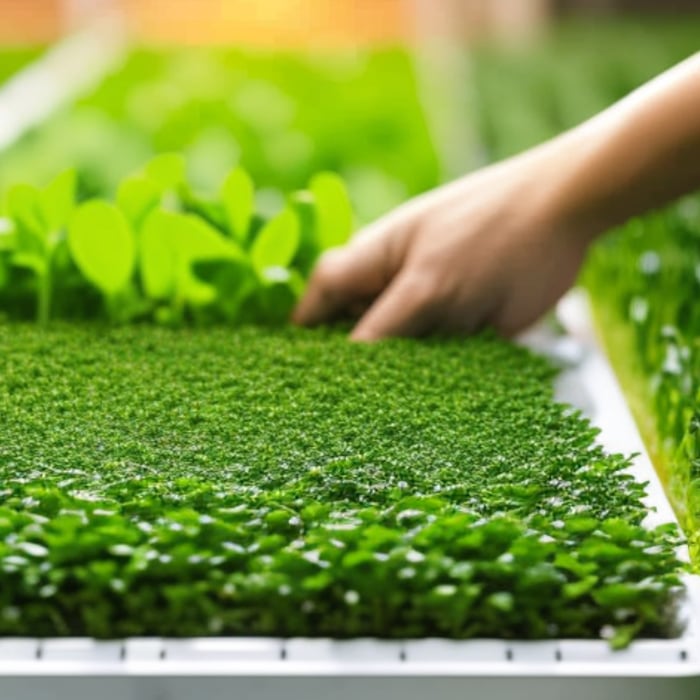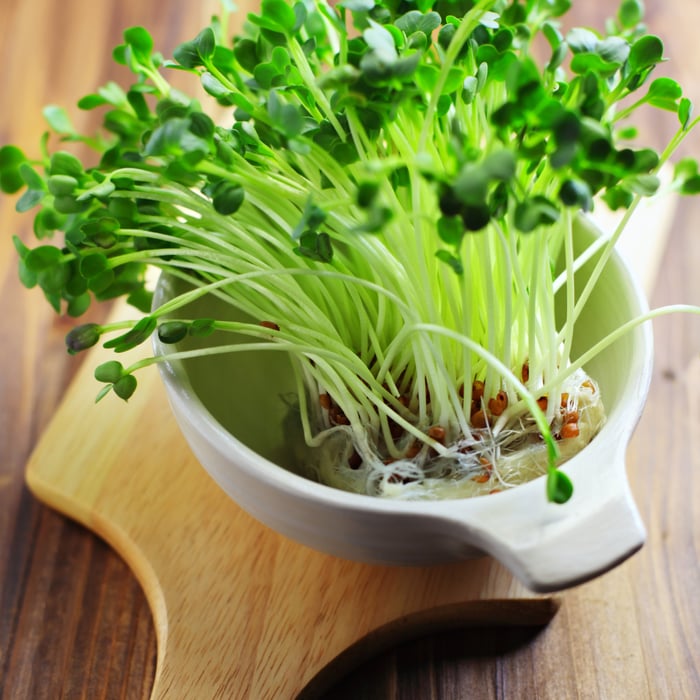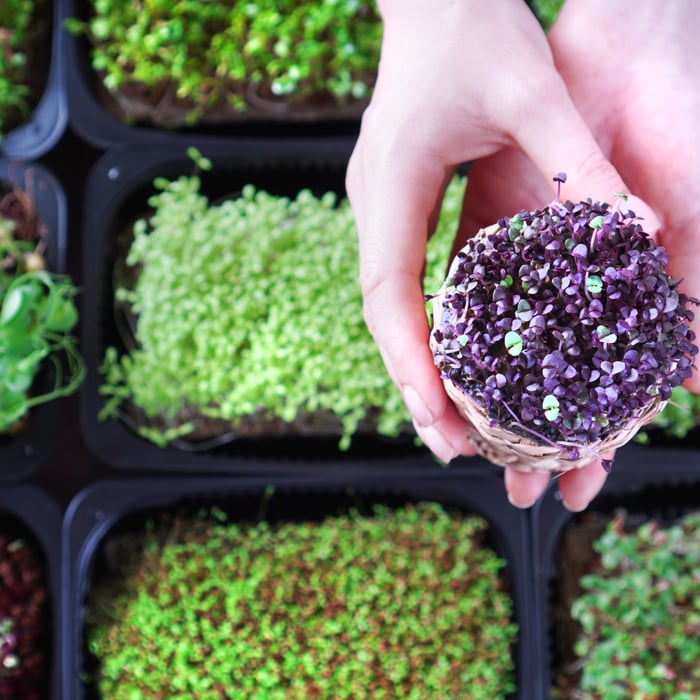Microgreens have become increasingly popular over the years due to their outstanding nutritional value, delicate flavor, and versatility in cooking. These young plants, essentially mini versions of mature plants, can be quickly grown at home and are a great addition to any dish. One of the most exciting things about growing microgreens is that they can be grown without soil using hydroponic systems. This blog post will explore how to grow microgreens without soil using hydroponic systems, coconut coir, paper towels, sprouting seeds, and more.
What are Microgreens?
Microgreens are young plants harvested at a very early growth stage, typically after the first two leaves have developed. They are usually 1-3 inches tall and come in various colors and flavors. Microgreens are often used in salads, sandwiches, and garnish for multiple dishes. They are also packed with nutrients and can provide an excellent source of vitamins, minerals, and antioxidants.
Waltham 29 Broccoli Sprouting Seeds - 1 Pound

$18.95
$24.95
Waltham 29 Broccoli Sprouting Seeds for Nutrient-Packed Microgreens - Heirloom, Non-GMO, Open-Pollinated, Non-Hybrid Discover the joy of growing your own Waltham 29 Broccoli Sprouts, a powerhouse of flavor and nutrition. These heirloom, non-GMO, non-hybrid, and open-pollinated seeds are perfect for… read more
Why Grow Microgreens Without Soil?
Growing microgreens without soil have several benefits. Firstly, it is a more efficient and space-saving way of growing. Hydroponic systems, for example, use up to 90% less water than traditional soil-based methods. Secondly, it is a cleaner and more hygienic way of growing, as the soil can be a breeding ground for bacteria and pests. Thirdly, increasing microgreens without soil allows for more control over the growing environment, such as temperature and nutrient levels, resulting in healthier and more consistent growth.
How to Grow Microgreens Without Soil?
There are several ways to grow microgreens without soil, but we will focus on two main methods: coconut coir and paper towels.
Using Coconut Coir
Coconut coir is a growing medium made from the fibrous husk of coconuts. It is a sustainable and eco-friendly alternative to traditional soil and is excellent for growing microgreens. Here’s how to grow microgreens using coconut coir:
Step 1: Soak the coconut coir in water for 30 minutes to an hour until it expands and becomes moist.
Step 2: Spread the coconut coir evenly across the bottom of a growing tray.
Step 3: Sprinkle the microgreen seeds on top of the coconut coir, ensuring they are evenly spaced.
Step 4: Cover the seeds with a thin layer of coconut coir and mist them with water using a spray bottle.
Step 5: Place the growing tray in a warm and bright location, such as a windowsill or under grow lights.
Step 6: Mist the seeds with water daily and keep the coconut coir moist but not waterlogged.
Step 7: After 7-14 days, the seeds should sprout, and the microgreens will be ready for harvesting.
Using Paper Towels
Another way to grow microgreens without soil is by using paper towels. This method benefits those who want to grow microgreens quickly and easily without investing in specialized equipment. Here’s how to grow microgreens using paper towels:
Step 1: Wet a paper towel and wring out any excess water.
Step 2: Spread the paper towel on a plastic tray or shallow dish.
Step 3: Sprinkle the microgreen seeds evenly across the paper towel.
Step 4: Cover the bases with another damp paper towel and place a lid on the tray to create a mini greenhouse.
Step 5: Place the tray in a warm and bright location.
Step 6: Check the paper towels daily and mist them with water using a spray bottle if they start to dry out.
Step 7: After 7-14 days, the seeds should sprout, and the microgreens will be ready for harvesting.
Choosing Microgreen Varieties
There are wide microgreen varieties with unique flavors and nutritional profiles. Some popular microgreen varieties include:
-
Broccoli - Broccoli microgreens are rich in sulforaphane, a cancer-fighting compound.
-
Radish - Radish microgreens are spicy and packed with antioxidants and vitamin C.
-
Pea-Pea microgreens have a sweet flavor and are a good protein, fiber, and vitamin C source.
-
Sunflower - Sunflower microgreens have a nutty flavor and are a good source of vitamin E, a powerful antioxidant.
-
Beet - Beet microgreens have a slightly sweet and earthy flavor and are high in antioxidants and betalains.
When choosing microgreen seeds, selecting high-quality seeds from a reputable source is essential. Ensuring that the roots suit your selected growing medium is vital.
Maintaining Hydroponic Microgreens
Maintaining hydroponic microgreens requires some care and attention, but it is relatively straightforward once you get the hang of it. Here are some tips for keeping microgreens hydroponic:
-
Monitor the nutrient solution - Check the solution regularly to ensure that the pH and nutrient levels are correct.
-
Keep the growing medium moist - Ensure that the growing medium is wet but not waterlogged, as this can lead to mold growth.
-
Provide adequate light - Microgreens need plenty of light to grow, so ensure they are sunny or under grow lights.
-
Harvest at the right time - Microgreens are typically ready for harvesting after 7-14 days. Harvest them when they are at their peak freshness and flavor.
-
Clean the hydroponic system - Regularly clean the hydroponic system to prevent the buildup of algae, bacteria, and other contaminants.
Comparing Hydroponic Microgreens to Soil-Grown Microgreens
Hydroponic microgreens offer several advantages over soil-grown microgreens. Firstly, hydroponic systems use less water, fertilizer, and space than soil-based methods. They also allow more precise control over growing conditions, such as temperature and nutrient levels. This can result in healthier and more consistent growth, leading to higher yields and better-quality microgreens.
However, some people prefer soil-grown microgreens for their natural taste and texture. Soil-grown microgreens can be less expensive as they do not require specialized equipment or growing mediums.
In conclusion, growing microgreens without soil is an excellent way to produce fresh, nutrient-rich greens at home. Whether you use coconut coir or paper towels, the process is relatively simple and requires minimal investment. By selecting high-quality seeds and maintaining the right growing conditions, you can produce a variety of delicious and nutritious microgreens all year round. So why not give it a try and start growing your microgreens today?
Try using our broccoli seeds for growing your own microgreens.
Leafy Green Salad Seeds | 8 Variety Pack

$15.95
Ultimate 8 Leafy Green Salad Seeds Variety Pack for Fresh, Homegrown Salads Introducing our 8 Leafy Green Salad Seeds Variety Pack, perfect for growing fresh, nutrient-dense greens right at home! This carefully curated selection of leafy green seeds includes heirloom,… read more







